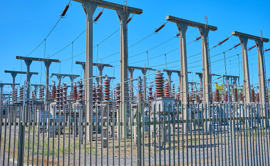Syphons: The forgotten asset that could unlock 50% extra capacity
Published: 27 November 2024
We estimate there are around 2,250 syphons across the UK wastewater network. Syphons are a forgotten asset which could increase capacity by up to 50% and improve performance of combined sewer overflows (CSOs) once maintained. However, we estimate that 80% of syphons are not being maintained.
What are syphons?
Syphons are sewers with a U-bend which run under obstructions such as rivers, lakes, roads, or railways. They are historic assets which we don’t construct anymore; we build pumping stations instead.

Syphons are significantly complex assets with the high risk of a build-up of debris and grease due to their layout. Because of where syphons are located, the impact of any structural issues can be devastating and not easy to rectify. Syphon failure or lack of maintenance can cause extensive environmental and reputational damage, with expenditure resulting from dredging rivers to fix damaged pipes to containing large-scale sewage releases.
They also present complex access and servicing challenges. Some syphons are self-cleaning, which means debris that has gathered during storm events will partially be cleared. However, if the syphon is not maintained, debris and grease is likely to have built up.
Syphons affect the performance of your network
It is very likely that the performance of your syphons will affect the performance of your wastewater network.
Syphons were often designed with extra capacity to manage additional flow. If grease and debris build up, this creates restrictions and leads to blockages, exacerbating flooding and pollutions upstream.
The connection between syphons and combined sewer overflows
There is no doubt that a syphon that is operating effectively will reduce the number of discharges from its CSO network.
Combined sewer overflows are constructed at pinch points in the network to stop flooding upstream. Syphons are often linked to CSO discharges due to their location.
With increased population, urban growth, and climate change driving extreme weather events, the sewerage system is being overwhelmed.
The Storm Overflows Taskforce was created in 2020 to work on proposals to reduce the impact of sewage discharge from storm overflows.
The Environment Act 2021 also mandated specific storm overflow reduction targets:
- Water companies will only be permitted to discharge from a storm overflow where they can demonstrate that there is no local adverse ecological impact.
- By 2025, water companies will have reduced CSO discharges from 2020 levels by around 25%.
- Water companies must significantly reduce harmful pathogens from storm overflows discharging into and near designated bathing waters, by either: applying disinfection, or reducing the frequency of discharges to meet Environment Agency spill standards; and improve 75% of overflows discharging into high-priority nature sites by 2035.
- Storm overflows will not be permitted to discharge above an average of 10 rainfall events per year by 2050.
- Water companies will be required to ensure all storm overflows have screening controls.
The Government expects water companies to ensure their infrastructure keeps pace with increasing external pressures, such as urban growth and climate change, without these pressures leading to greater numbers of discharges.
Even if there is no CSO near the location of a syphon, inadequate maintenance can still have an impact.
Show your syphons some love
A well-maintained syphon will ensure your network is running effectively and at its maximum efficiency.
A routine inspection will ask whether the asset is working to its design specification. It will consider:
- Flows: Duty and storm syphon pipe
- Spills: CSO or nearby flooding
Proactive inspections and maintenance reduce service issues, blockages, and pollutions. These can be done on 1-10-year programmes based on how long it takes for debris or grease to build up. Syphon monitoring also helps with determining maintenance schedules.
In addition to draining pipes and clearing debris to maximise flow capacity, experts can pinpoint emerging network vulnerabilities – from cracks, observations, infiltration, and structural problems to potential sewage leaks and pollution hazards.
Maintenance work can identify issues to prevent syphon failure, saving an estimated £10+ million in replacement costs, associated pollution fines, and operational downtime. Proactive pipe lining can add 50-100 years to the life of an asset, and clearing natural debris can increase sewer capacity by up to 50%.
That means:
- Reduced pressure on CSOs
- Optimum network flow and asset performance
- Fixed costs and simplified budgeting
- Work qualifies for capital expenditure
- Early warning of structural issues and overflows
- Proactive risk monitoring and pollution prevention
- Consistent compliance with environmental legislation
Syphons are choke points which clog up naturally because of the way they are constructed. We are diligently monitoring and inspecting sewers for blockages and weak spots, why wouldn’t we do the same with our syphons?
Syphons are a forgotten asset
Neglecting maintenance of syphons comes down to two issues: budgets and quick wins.
Water companies either aren’t aware they need to spend money on syphon maintenance, or they don’t know how to. It is a larger cost than routine sewer maintenance as the asset is more complex, often bigger, and the volumes of flow are greater, so the risk and reward is greater.
As roles and responsibilities change rapidly in the water industry, people are looking for more quick wins. A strategy that may take a few years to establish and begin to reap benefits is less attractive.
The wider issue of asset maintenance in the water industry requires a legacy approach. Syphon cleaning is a long-term strategy with long-term gains for an ongoing effective network.
Regulation – ignorance is not always bliss
Maintaining syphons not only reduces CSO discharges, but it also acts as additional proof of responsibility when the regulators pay a visit.
Once we are undertaking a regular syphon maintenance programme, we rarely find anything in them that require additional work. But if a flooding incident occurs because of a combined sewer overflow, the record of syphon maintenance helps in supporting evidence to the regulator.
By having syphons and knowingly not maintaining them, you run the risk of further punishment from the Environmental Agency due to lack of maintenance of a critical asset.
Data monitoring and modelling
We have estimated there are around 2,250 syphons in the UK, but most water companies have little to no information on their syphons, where they are located, or what their load capacity is.
The first job here would be to go out into the network to identify where the syphons are and plot them on existing records.
Once we know where syphons are located, we can begin to understand them:
- Flow and level monitors aid AI monitoring, alert to blockages, assess hydraulic performance, and assist in understanding operational requirements.
- Hydraulic modelling identifies where the flow is coming from, where it’s going, and how it’s getting there, to process design long-term engineering solutions.

Data helps identify where the problems are in the network and enables water companies to make decisions more efficiently.
Syphon maintenance programme
A syphon maintenance programme will deliver repairs, monitoring, and cleaning at any interval from 12 months to 10 years, depending on site history and current conditions.
Even as part of a rolling maintenance programme, every project begins with a comprehensive asset inspection to evaluate syphon condition, access points, and potential risks. Depending on site structure and pipe depth, specialist crews – trained in supervising and carrying out high-risk, confined space entry operations – then determine the ideal isolation, drainage, and cleaning techniques for the job.

Pipes are isolated using bungs, gate valves, or other similar methods. Where non-isolated pipes can’t cope with increased flow, overpumping methods may be used to re-route excess water around the river or canal during the cleaning process.
Qualified professionals manage the isolation process, dealing with access chamber issues, such as corrosion on hatch boxes. Once pipes are safely drained, confined space specialists gain entry via access areas on the lowest point of the syphon. CCTV provides clear sight of current blockages caused by grease or debris, while highlighting structural issues that could cause subsequent issues.
To deliver maximum productivity and clearance, we use an effective combination of leading-edge sewer cleaning vehicles and deep suction vehicles from our nationwide fleet. Large-scale blockages are treated with our efficient recyclers, which re-use the water for pipe cleaning.
A typical programme to inspect and clean all syphons on a network
- Asset collection – 6 months depending on number of assets
- Interim cleaning and asset collection of problematic syphons or near CSOs
- 2–3-year plan to drain down and clean syphons
- Repeat drain downs to check cleanliness after 2-3 years of use and set up maintenance schedule
- Programme to inspect high-category syphons of structural importance
- Sewer lining to reduce grease adhering to pipe surface
Syphons are the golden goose of the water industry
Syphons are neglected because they are the Pandora’s box of the water industry; you don’t know what you will find when you lift the lid on them. However, knowledge is power and, in the case of syphons, understanding their condition means you can create a plan for managing them in the long run.
The long-term nature of syphon maintenance means value is generated in years, not months, which does not fit with the often-short-sighted view of asset maintenance. But those with the vision and patience can reap the rewards.
There are huge opportunities to be accessed, not least taming the ugly sister that is CSOs. The value of creating additional capacity in an already stretched network should not be underestimated.
The costs can come under CapEx and regulators will look on you more favourably if you can present maintenance paperwork for all your assets, instead of ignoring the elephant in the room when the regulator comes knocking!
Looking to the future, data monitoring and modelling can help you access even more hydraulic capacity when you begin to better understand your syphons.
More from our Knowledge Hub
Environmental compliance today, creating a sustainable tomorrow
Helping you reduce risk to the environment and your operation by managing assets compliantly while achieving commercial, ESG, and net-zero goals.
Contact our experts




